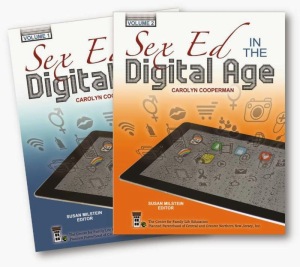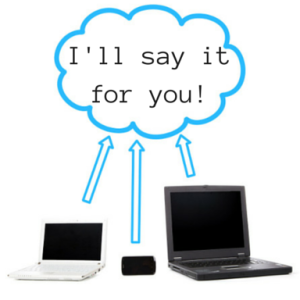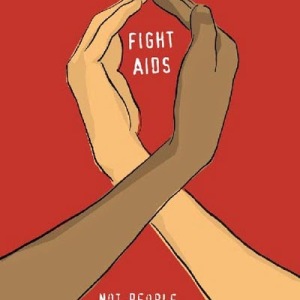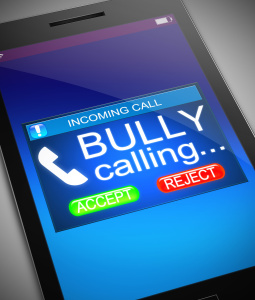 Welcome back, everyone! I ended up taking a few weeks off during the hectic run-up to and during the National Sex Ed Conference, but it was well worth it!
Welcome back, everyone! I ended up taking a few weeks off during the hectic run-up to and during the National Sex Ed Conference, but it was well worth it!
If you weren’t there, we missed you terribly! And you missed a fantastic experience! I have a half-written post about my experiences regarding the conference that I’ll post here in the upcoming days – but to be honest, I’m still trying to grapple with the enormity of the learning and connecting and evolving that happened there.
One of the things that happened, though, in the event that you haven’t heard about it yet, was that there was a collective conversation about racial injustice in the field of sexuality education. Alongside the national conversation about racism that unfolded during the conference, we needed to continue our professional dialogue on a deeper level. (You can watch a video and read a statement that come from the conversation at the conference on the Women of Color Sexual Health Network Tumblr.)
Partly as an outgrowth of this dialogue, Bill Taverner, the Executive Director of the Center for Sex Education, posted a comment about racism and…well, here’s what happened:
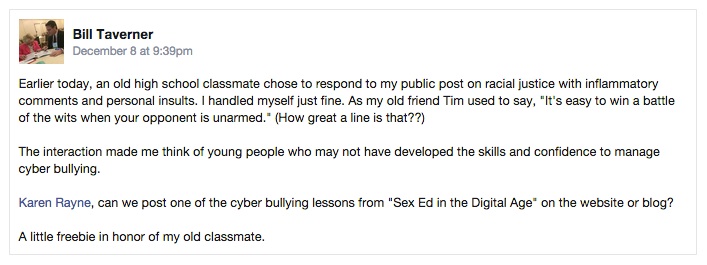
And so, thanks to Bill’s old classmate, here’s a short description of the lesson plan you can download at the bottom of this page:
______________________________________________________
STAYING COOL UNDER (PEER) PRESSURE: Using Digital Education Tools to Model Assertive Communication Skills
By Jessica Silk
Objectives
By the end of this lesson, participants will be able to:
- List one characteristic of passive communication, one of aggressive communication, and one of assertive communication.
- Demonstrate at least one way to say “no” to peer pressure to engage in sex.
- Identify at least one digital education resource to use on a phone or computer to get more information about handling peer pressure effectively.
Rationale
Teaching effective communication skills is an important component of sex education. Without the ability to communicate and negotiate decisions, young people are not able to implement healthy decisions and may be put at risk. Classroom settings are limited in their ability to illustrate what pressure and effective responses look like in real-life situations. Digital education tools offer a new and compelling ways to show teens what passive, aggressive, and assertive communication styles look like when young people are being pressured to drink, use drugs or go upstairs alone with someone at a party. The digital tool on which this lesson is based was developed based on focus groups and conversations with more than 350 teens across the country. The tool, “The Kickback,” is designed to allow young people to see what happens when passive, assertive or aggressive communication is used. This tool can be used to supplement in person interactive activities, including brainstorming, group discussion, and skills practice about communication. Participants will also leave the lesson with new resources they can use on their phones or computers to further their learning.
______________________________________________________
As with so many of the lessons in Sex Ed in the Digital Age, one of the things I like most about this is the scenarios. Learning about decision making and communication through actively engaging in role play is a fantastic methodology, but requires solid examples as a starting ground.
To see exactly what I’m talking about, you should download this free lesson by clicking here: Staying Cool Under (Peer) Pressure.
To learn more about Sex Ed in the Digital Age, visit the Sex Ed Store.
To buy Sex Ed in the Digital Age, click on the manual cover:
